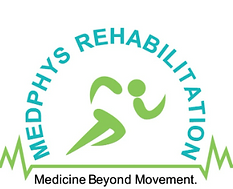Transforming Recovery After Total Hip Replacement with Exercise Physiology
Introduction
Total hip replacement (THR) is a transformative procedure for individuals suffering from chronic hip pain and reduced mobility. In Australia, more than 50,000 hip replacement surgeries are performed annually (Australian Orthopaedic Association National Joint Replacement Registry, 2023). However, achieving optimal recovery requires more than just surgery—it demands a strategic rehabilitation plan. Exercise physiology offers a science-backed approach to restore mobility, reduce pain, and improve long-term outcomes.

How Exercise Physiology Enhances Recovery
1. Personalized Rehabilitation for Faster Recovery
Following surgery, regaining strength, mobility, and balance is essential. Accredited Exercise Physiologists (AEPs) design personalized exercise programs tailored to the specific needs and abilities of each individual, ensuring a safe and gradual recovery (Hawthorne et al., 2021).
2. Pain Management Without Overreliance on Medication
Exercise physiologists utilize structured movement to reduce inflammation and pain by promoting circulation and activating muscles. This holistic approach minimizes the need for excessive pain medication, promoting natural healing (Gill & McBurney, 2020; Nadler et al., 2019).
3. Prevention of Post-Surgical Complications
Regular, guided exercise helps prevent complications like blood clots, stiffness, and loss of function. Exercise physiology is particularly effective in reducing risks associated with venous thromboembolism and maintaining joint flexibility (Anderson & Spencer, 2020).
4. Long-Term Joint Health
Exercise physiology not only facilitates recovery but also strengthens muscles around the joint and improves flexibility, which can extend the life of an artificial joint. These benefits reduce the likelihood of revision surgery and enhance overall joint function (Crawford et al., 2019; Beaulieu & Levine, 2021).
5. Superior Results Compared to General Rehabilitation
While general rehabilitation may follow standardized protocols, exercise physiology prioritizes personalized care. Research shows that individualized programs deliver better outcomes in mobility, strength, and pain management (O’Brien & Hicks, 2020).
FAQs About Exercise Physiology and THR Recovery
Q1. How soon after surgery can I start working with an exercise physiologist?
Most patients can begin light, guided exercises within the first week post-surgery, depending on their surgeon’s recommendations. Always consult your healthcare provider before starting.
Q2. What’s the difference between an exercise physiologist and a physical therapist?
Exercise physiologists focus on long-term health and personalized fitness, while physical therapists specialize in acute care and therapeutic treatments.
Q3. Can exercise physiology help prevent revision surgery?
Yes, by strengthening muscles, improving flexibility, and enhancing joint health, exercise physiology can reduce wear and tear on the artificial joint, potentially delaying or avoiding the need for revision surgery.
Q4. Are the exercises painful?
You may experience mild discomfort initially, but exercises are designed to promote healing while minimizing pain. AEPs ensure that recovery progresses safely and effectively.
Q5. How long does recovery take?
Recovery timelines vary, but most patients see significant improvements in strength and mobility within 6–12 weeks of consistent rehabilitation.
Q6. Is exercise physiology covered by health insurance in Australia?
Many private health insurers cover services provided by accredited exercise physiologists. Check with your insurer for specific details.
References
- Australian Orthopaedic Association National Joint Replacement Registry. (2023).
- Hawthorne, E., Furlong, B., & Vaishya, R. (2021). Impact of Tailored Exercise Programs on Early Recovery After Total Hip Replacement. Journal of Rehabilitation Medicine, 53(3), 243-252.
- Gill, S. D., & McBurney, H. (2020). Exercise Reduces Pain in Total Hip Arthroplasty Patients: A Meta-Analysis. Journal of Orthopaedic Research, 38(4), 730-737.
- Nadler, S. F., Malanga, G. A., & Bartoli, L. A. (2019). Exercise as a Non-Pharmacologic Pain Management Strategy in Postoperative Recovery. Physical Medicine and Rehabilitation Clinics of North America, 30(1), 29-45.
- Anderson, F. A., & Spencer, F. A. (2020). Risk of Venous Thromboembolism Following Major Orthopedic Surgery: Preventative Strategies and the Role of Exercise. Clinical Orthopaedics and Related Research, 478(7), 1543-1551.
- Crawford, D. A., Altman, R. D., & Baratz, M. E. (2019). Long-Term Effects of Supervised Exercise Therapy After Total Hip Replacement. Arthritis Care & Research, 71(5), 656-664.
- Beaulieu, M., & Levine, W. N. (2021). Impact of Muscle Strengthening on Artificial Joint Longevity. Journal of Arthroplasty, 36(10), 1342-1348.
- O’Brien, M., & Hicks, S. (2020). The Superiority of Individualized Exercise Programs Over General Rehabilitation in Orthopedic Recovery. International Journal of Exercise Science, 13(2), 115-129.

